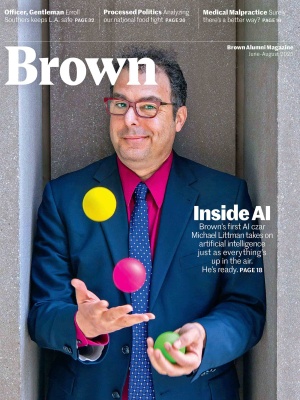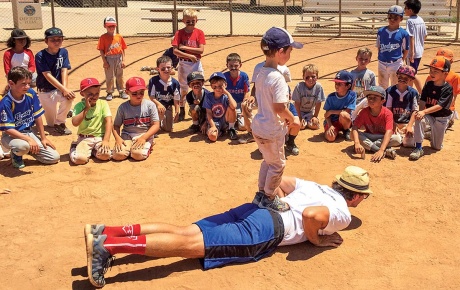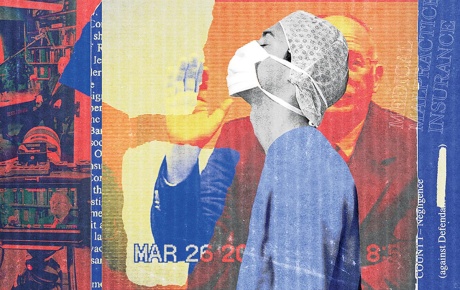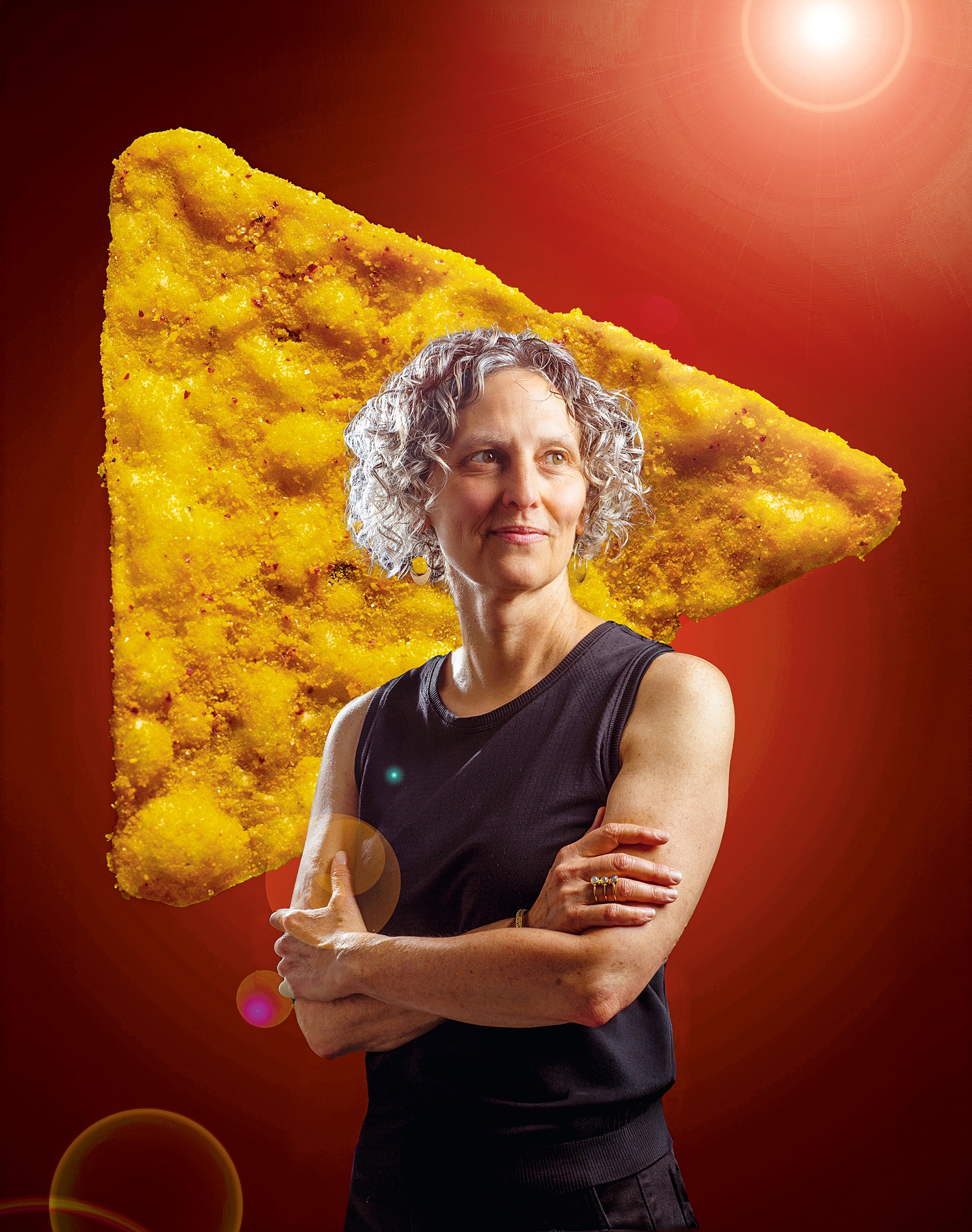
Food Fights
In her latest book, former chef and current food science professor Charlotte Biltekoff bites into processed food and the politics of knowledge.
Is processed food always bad for you? Is “real food” any better? Charlotte Biltekoff ’00 AM, ’06 PhD, a professor of food science and technology at UC Davis, won’t answer that question directly. “That’s unsatisfying for some folks,” she says, but—ever the educator—“I do hope to entice them into a different conversation.”
Her latest book, Real Food, Real Facts: Processed Food and the Politics of Knowledge, is a dense deep-dive into an ongoing culture war that heated up at the turn of the 21st century around what we eat and what happens to it before it lands on our plate.
On one side, you have authors like journalist Michael Pollan (In Defense of Food) and NYU public health nutritionist Marion Nestle (Food Politics) talking about “whole food” and the social, cultural, and economic systems involved in food production. Biltekoff calls this framework “Real Food.”
On the other side are trade associations like the International Food Information Council (IFIC) and the Grocery Manufacturers Association (GMA), which go to great lengths to explain that your triple-washed organic spinach and Pollan-approved olive oil are in fact “processed” and that there’s a long list of unpronounceable ingredients in a simple banana (see sidebar). This “Real Facts” framework uses “food scientism” to try to educate consumers out of their skepticism of the food industry.
Biltekoff’s book looks at the “knowledge politics” behind this food fight—but it’s a painstaking history, not a polemic. And her refusal to provide a sound bite on processed food makes sense for a professor who teaches both in the College of Agriculture and in American Studies where, according to the department website, she “builds bridges between scientific and cultural approaches to questions about food and health.”
Processed-food roots
Biltekoff grew up in Buffalo, New York, which she later learned was a test market for the fresh creations of food science. Her young mind may have been among the first to encounter chicken nuggets shaped like dinosaurs and yogurt in a tube.
The Sunday paper was a special event for Biltekoff. Most kids would sift out the comics, but not young Charlotte. She wanted the advertising inserts, the glossy pages touting new food products. “They were colorful, they were outlandish, they were fun,” she recalls. “First thing I would collect them and sit down and just turn every single page of these wild food advertisements. I found them totally fascinating.
“New forms, new shapes, new flavors. I couldn’t help but wonder what was the machine behind this,” she says. And the ideas! “There was somebody out there who was trying to imagine what people wanted,” she says, still enthralled.
Food processing ran in her family. In 1931 her great-grandfather founded Bison Foods, a dairy processor. Trucks rolled into the city with milk from upstate dairies. Bison’s best known for its French onion dip, which has its own Facebook page for the obsessed. But at age 13, Biltekoff’s axis shifted. Her family sold the business and she turned vegetarian, though not for ethical or environmental reasons. “It was just: stop eating meat,” she remembers. “Just trying a new diet.”
Her interest in food continued in college at Wesleyan until she exhausted the syllabus of possible food-related courses. Cultural studies was the lens that she loved, but “I wanted it to be about food, and it wasn’t,” she says. “Food Studies didn’t exist.” So in 1991, after two years, she dropped out of college and moved to San Francisco to “work with vegetables.”
Biltekoff’s career trajectory has her perfectly situated to translate between food scientists and foodies. And now she teaches the class she always wanted to take—a giant lecture class called Food in American Culture.
“That was exactly what I told my parents,” Biltekoff told the Association for the Study of Food and Society, “and you can imagine how much they loved the idea.”
By luck, Biltekoff landed at the iconic upscale vegetarian restaurant Greens, so popular it had spawned a cookbook (and would publish two more). “I was probably the most inexperienced person ever to work on the line,” Biltekoff laughs.
Greens, out on a pier with views of the Golden Gate Bridge and Alcatraz, “was a total dream. It was the perfect place for me. It was not nearly as toxic as what most people think of as restaurant kitchens now.” Starting on the prep crew, she progressed to pizzas, then sauté, then the mesquite grill.
But as Biltekoff and her friends reveled in the food scene, she began to rethink her vegetarianism. Despite Greens’s haute cuisine, “I felt like I was experiencing such a limited part of the art of food and cuisine and cooking,” she says. To expand her options she taught herself to eat meat again, even as the vegetarian fare that she served up every day at work was gaining ethical and environmental momentum.
Biltekoff seriously explored opening up a restaurant with two colleagues, but from that precipice went back to college at University of California, Berkeley, to finish her undergraduate degree.
Food politics 101
At some point during that time, on a bottom shelf at Green Apple Books, she stumbled upon a dusty copy of Perfection Salad, a history of 19th century dietary reformers by journalist Laura Shapiro. These domestic reformers championed industry and precision and the new science of nutrition. They wanted to address the biggest social problems of the day by teaching people to eat right.
The girl with the newspaper inserts, the student who left school for vegetables, had found her template for studying food history. The book—and its curious parallels with the Bay Area food scene—shaped her inquiry for the next 20 years.
Across the Bay in Berkeley, Alice Waters was expanding her vision of food beyond her pioneering restaurant, Chez Panisse. “There was a real sense of passion and energy and momentum around the idea that it mattered what we ate, not just for our own bodies, but for the world, for the future, for social well being, for planetary well being,” says Biltekoff. “I found this idea of food politics very alluring, and this idea that there was going to be a kind of social revolution around good food that was going to change our diets and maybe our society as well.
“The wild thing is that Alice Waters and her social movement were saying the exact same thing” as the domestic reformers, says Biltekoff. “Their idea of a good diet could not have been more opposite, but their idea about why it mattered to change people’s eating habits was very much the same.” Separated by 100 years, they were advancing totally different ideas about a good diet, but they were driven by the same assumptions about the socially and politically transformative nature of teaching people to eat right.
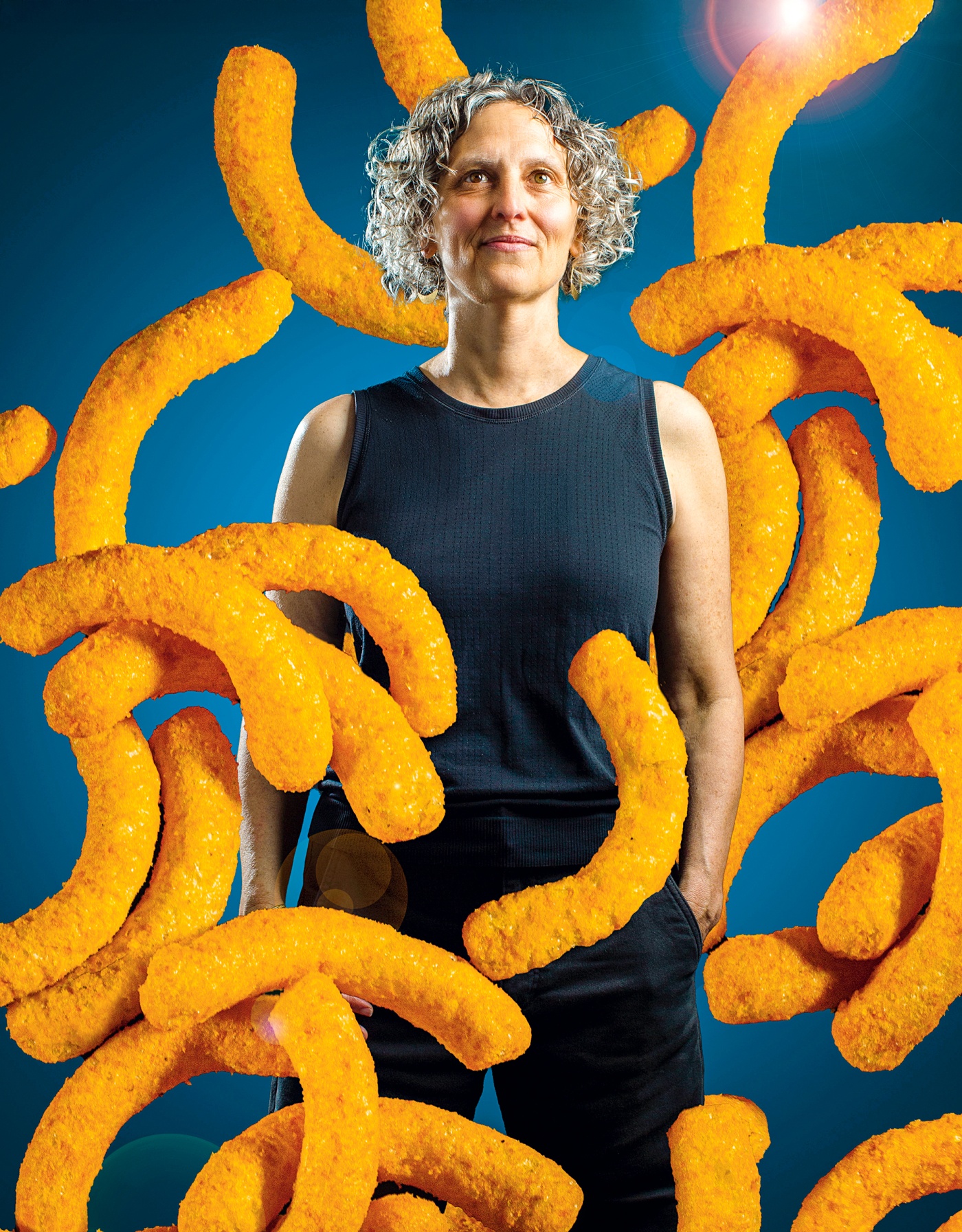
The domestic reformers wanted homes to be a place where women practiced science and engineering, standardizing recipes and measuring their outcomes with nutritional science. Eating was for energy, and pleasure was seen as a threat to the rational will to eat the right foods to produce energy for work.
A century later Alice Waters wanted to get back to the senses, to connect with heritage and tradition. “We need to get our hands dirty, we need to be less standardized, exactly the opposite,” says Biltekoff. “Alice Waters is all about pleasure, and about how the sensory pleasure is the gateway into eating right.”
Biltekoff wrote her senior thesis “on the relationship between Progressive era dietary reformers and Alice Waters and her ‘Delicious Revolution,’ which was happening all around me,” she told the Association for the Study of Food and Society. Feeling she lacked the tools to “really understand dietary reform the way I wanted to,” she says, prompted Biltekoff to apply to graduate school at Brown.
Foodie turned professor
If you’re wondering how a Bay Area foodie transitioned to the seven-year grind of a PhD in American Studies in Providence, your intuition is keen. “I did cry in the grocery store at first,” Biltekoff admits, missing the bright cornucopia of California produce.
Now she tries to go back to Rhode Island in the summertime to refresh her memories. “Eating giant fried scallops out of a paper bag at the beach, all of that...and then there’s Del’s frozen lemonade,” she sighs. The convergence of Italian and Portuguese cuisines and the sea, the shore food, the fried seafood culture... “Rhode Island has incredible, incredible cuisine,” she says.
Biltekoff’s career trajectory has her perfectly situated to translate between food scientists and foodies. “That is actually my job,” she says. And now, every year, as part of her work at UC Davis, she teaches the class she always wanted to take—a giant lecture class called Food in American Culture.
Her latest mission is detangling the many different arguments we have over processed food. What even is processed food? The public’s definition and the industry’s definition are different and ever-changing. “I’m really interested in its slipperiness and how it’s used and deployed in different ways and in different moments,” Biltekoff says.
Grown or made?
While the public sees processed food as any food that isn’t natural, has additives, or can’t be considered a whole food, the industry sees processed food as anything that has been prepared for mass distribution. Preparation can mean cleaning and packaging; removing the seeds from fruit before canning; a technical advancement, like genetically engineered strawberries; or doing anything to make a food more nutritious or shelf-stable, more convenient or more delicious. Food processing also allows economies of scale that reduce waste and cost.
“In the industry, sometimes there’s this sense that the public doesn’t know what they’re talking about—you know, yogurt is processed and pasta is processed and so are Cheetos,” Biltekoff says. “As the food industry has rightly pointed out, while the public has seemed to desire their food to be less processed, they still want it to taste good and last and not feel funny in their mouths and be familiar.”
Meanwhile, she adds, “when someone in the general population says ‘processed food,’ they’re talking about this list of 100 ingredients that doesn’t make sense for cheese.” And the “Real Food” folks are not just prioritizing that whole banana over, say, a banana-flavored diet soda, they’re looking at big forces that range far beyond field and fridge—how that banana was grown, who harvested it, the ramifications of shipping it. “The bigger questions really matter,” Biltekoff says. “We need to understand the social, ecological, and environmental systems in which food happens.”
“In the industry, sometimes there’s this sense that the public doesn’t know what they’re talking about—you know, yogurt is processed and pasta is processed and so are Cheetos.”
We see this in the political tug-of-war over the migrant workers that make the food economy work, and in the animosity between vegans and carnivores. We see it in Red Dye 40 and the social costs of diabetes.
“What kind of food system do we want?” she asks. Do we want the farm-to-table fairytale of Instagram-worthy food and bird-friendly coffee? What does that cost, and can it feed the world? The questions are tangled and confusing, and in Real Food, Real Facts, Biltekoff analyzes two poles of the debate. “These two worlds are functionally different and also intellectually different,” she says. That challenged her thinking. “The better job I did of being a cultural critic, the less legible or less effective I could be in food science and vice versa.”
One watershed event in this debate was the 2008 release of the documentary Food, Inc., which raised alarms about the industrial production of meat, corn, and soybeans by a few large corporations. With the participation of Michael Pollan and Fast Food Nation author Eric Schlosser, the film gained wide distribution, showing up in school curricula.
The food industry responded with fewer processed products—but also countered with information and education campaigns, including a teaching guide to the movie.
“This looks like a contest over facts: who’s right, who’s wrong?” says Biltekoff. But she sees it as a failed tactic. The food industry doesn’t take the public’s views seriously, she says, dismissing critiques as irrational and misinformed, akin to anti-vax and climate denial rhetoric.
“Dismissing people’s concerns about technological or scientific innovation as purely misinformed and irrational is simply alienating and exacerbates the problem,” she says. When the industry runs informational gambits on us, the issue is that they aren’t just contesting facts. They are rejecting the idea that people should even question the system.
The kind of conflicts we’re having around food are very similar to, and maybe even inseparable from, larger post-truth politics. “Why can we not understand each other?” Biltekoff asks. “What is really going on here?”
As molecular biologist, nutritionist, and public health advocate Marion Nestle points out in her review of Real Food, the food industry’s response to consumers demanding “real” food “is based on the idea that if you could only correct public ignorance and misperceptions, you could sell your products more easily.” But, Nestle says, “public concerns about food are about politics, not science. And food scientism is a form of antipolitics.”
These differences, Biltekoff argues, are the key to moving forward. “There’s no problem in the world of food and agriculture that can be solved without our combined expertise,” she says. And when politics and conflict gets to be too much? “I like pasta with butter. Very small pasta with butter. That’s my go-to comfort meal,” she says. “Things are really bad? You will find me eating a bowl of buttered orzo.”
Is that a family recipe? She laughs again. “It just feels like it goes back forever, like, you know, to the shtetl.”
Erik Ness is a science and environmental writer based in Wisconsin. For more of his environmental writing, check out lemonadist.com.

